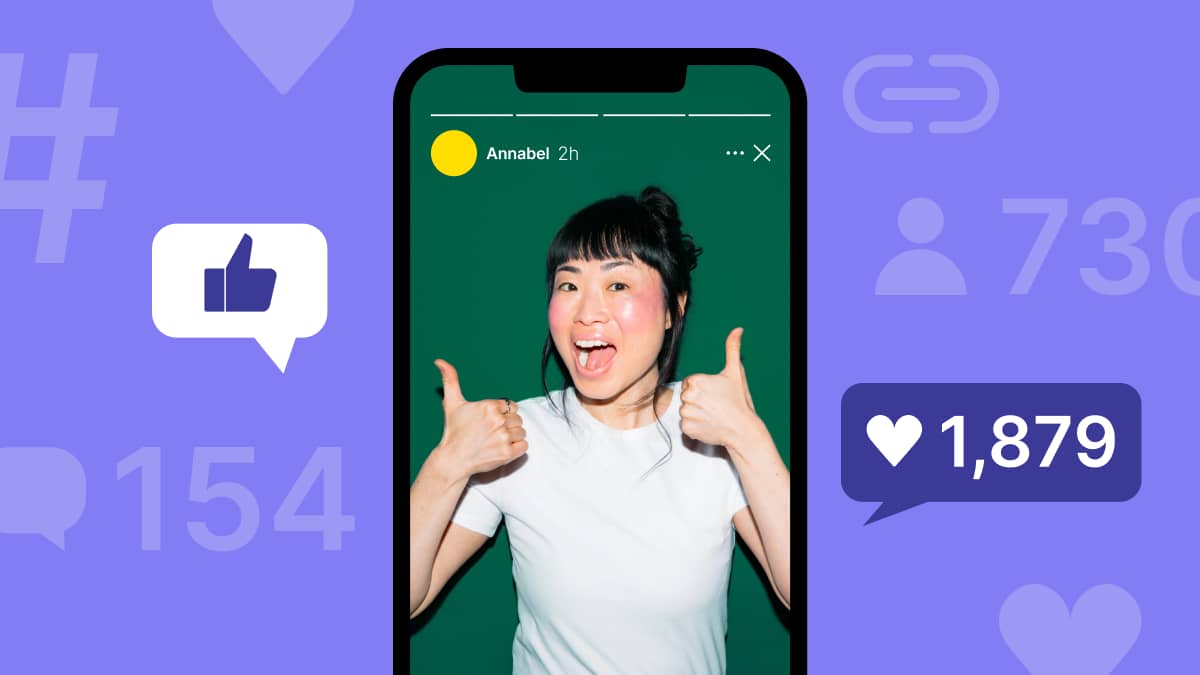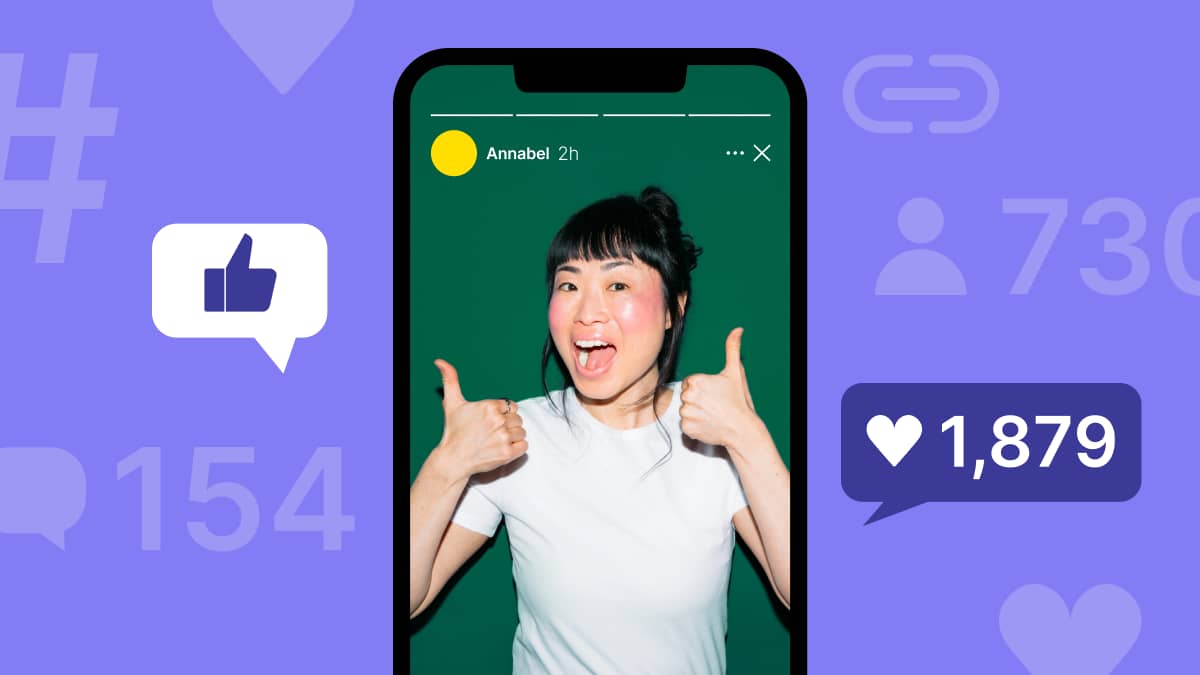Influencer marketing isn’t just for consumer brands. More and more B2B companies are using the same tactics to build credibility and speed up sales without spending millions.
The only real difference is who the creators are. Instead of TikTok and Instagram stars, B2B campaigns rely on thought leaders and industry figures to drive interest and buying decisions.
This guide teaches you how to forge fruitful, cost-effective partnerships with those people to reach your ideal customers faster. You’ll learn the types of influencer relationships to build and how to set and achieve meaningful campaign goals.
Key takeaways
B2B influencer marketing works by borrowing trust from industry experts, analysts and thought leaders rather than celebrity endorsements.
The most effective influencer strategies tie campaign goals to measurable KPIs, from engagement rates and conversions to pipeline impact and new revenue.
In B2B, micro- and nano-influencers typically offer stronger credibility and ROI than high-profile Instagram influencers.
Pipedrive’s AI CRM helps you track influencer-driven leads, automate follow-ups and measure ROI, turning influencer campaigns into a repeatable sales channel. Sign up for a free 14-day trial today.
What is influencer marketing and why does it work?
Influencer marketing is when companies partner with people who hold influence over a specific audience to promote a product or build general brand awareness.
These partnerships take many forms, such as:
Sponsored social media posts
Product reviews and endorsements
Event collaborations
Co-created marketing content
Influencer marketing drives engagement and conversions by borrowing customer trust.
As audiences already see influencers as credible, their recommendations feel authentic. That trust often translates into stronger engagement and higher conversion rates, especially for younger buyers.
Sprout Social reports that 64% of social media users are likelier to buy from a brand that works with an influencer they like. The figure rises to 76% for millennial and Gen Z audiences.
At the same time, 37% of buyers across all age groups go to social media first when searching for product reviews and recommendations. Gen Z even puts social before search.
These trends prove that brand-owned content (e.g., blog posts, product pages and company social updates) isn’t always the best way to influence buying decisions – at least not alone.
That’s where influencer marketing helps.
How influencer marketing works for B2B companies
In business-to-business (B2B) sales, influencer marketing works best when brands partner with people who already shape professional conversations.
Unlike B2C, where lifestyle creators dominate, B2B credibility comes from trusted experts and practitioners. These include:
Industry analysts
Business thought leaders
Specialist bloggers and media outlets
Influential consultants
Research shows business audiences find these figures far more persuasive than celebrities and social media personalities.
According to Forrester, B2B buyers rate peers, customers and analysts as the most trusted information sources, even ahead of vendors’ sales reps. In contrast, social media influencers rank lowest, with only 44% of respondents trusting them.
For example, a co-hosted event with industry partners can be just as persuasive for a B2B audience as product placement is for a B2C one.
Here’s B2B SaaS company Freemius promoting an upcoming webinar on LinkedIn:
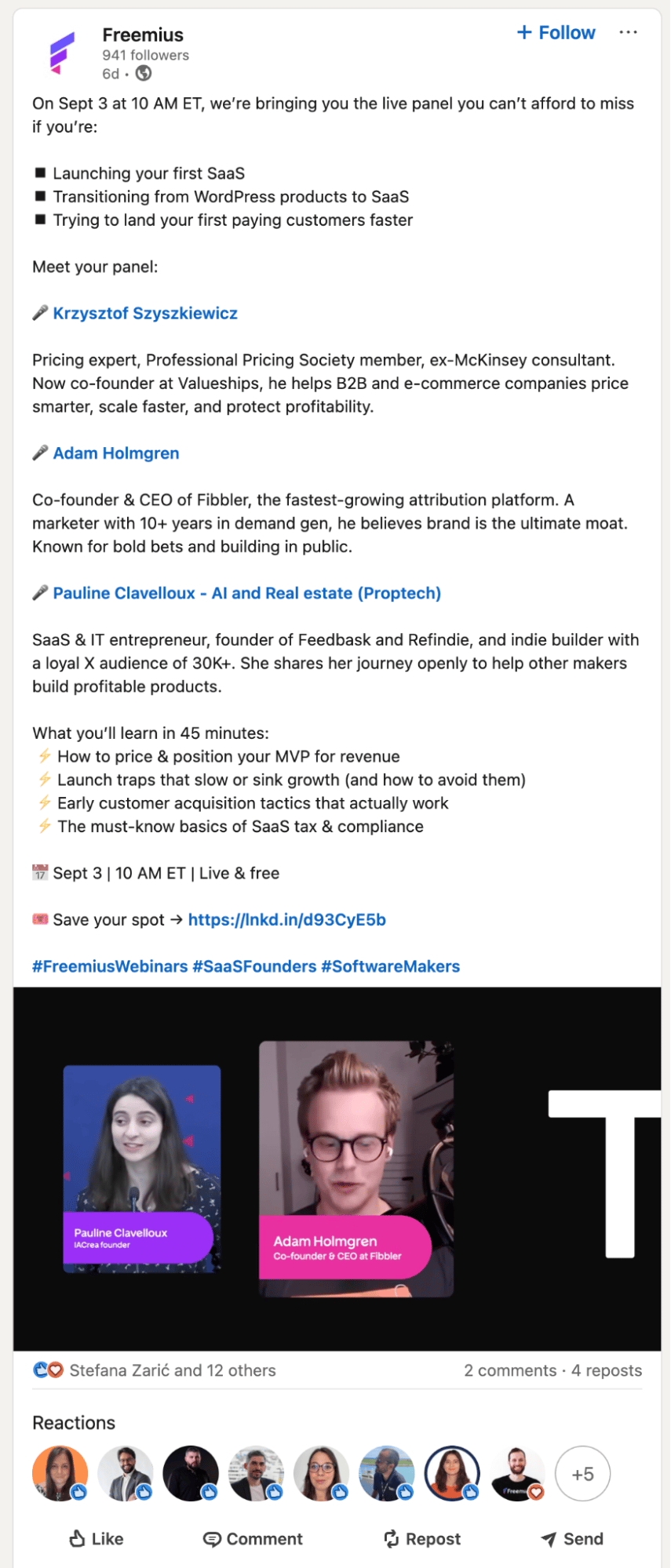
The event’s panel features a pricing expert, a tech company co-founder and an IT entrepreneur. Each has a large follower count and credibility in their niche, helping Freemius reach and win the trust of decision-makers from its target audience profile.
The more those influencers engage with the event’s promotion and follow-up content, the wider Freemius’ social media reach stretches

That ripple effect is a big part of what makes B2B influencer marketing campaigns powerful and cost-effective. Trusted voices amplify your message and build confidence among potential buyers
Four Steps to Finding the Right Leads Fast
How to build an influencer marketing strategy: step-by-step
A B2B influencer strategy takes a little more planning than a consumer campaign.
It involves longer sales cycles, bigger buying committees and relationship-driven purchasing decisions.
That doesn’t mean it’s out of reach for smaller companies or must be expensive. You just need a solid roadmap to stay organized.
Here’s how to forge high-quality influencer collaborations on any marketing budget, one step at a time.
1. Define your campaign goals and KPIs
Before you approach any influencers, decide what success looks like. The choice will guide who you work with, the channels you use and how you measure return on investment (ROI).
Most businesses use influencer marketing to grow sales and keep customers coming back. To get there, the goals often look different. Some focus on building awareness, others on reputation management and many on driving direct conversions.
Each of these goals benefits from different influencer marketing tactics:
Brand awareness usually comes from sponsored posts, co-created content or social media collaborations that put your brand in front of new people.
Brand reputation grows when respected voices in your field endorse you (i.e., the B2B equivalent of a celebrity shout-out).
For conversions, tactics like discount codes, giveaways and influencer-led sales demos create trackable actions you can measure.
Tie each goal to a clear key performance indicator (KPI). Clicks and views tell you if awareness campaigns work, while sign-ups and sales show whether conversion tactics pay off.
Setting metrics early keeps your campaign focused and makes ROI easier to prove.
2. Choose your influencer marketing approach
The next step is deciding how to work with influencers.
Your goals will shape your tactics, but the right choice also depends on budget and audience fit.
Here are four common approaches B2B brands use:
Influencer marketing approach | How it works and when to use it |
Micro-influencers (1,000–100,000 followers) and nano-influencers (<1,000 followers) | Smaller creators usually have closer relationships with their audiences than macro-influencers (>100k followers). Their content feels more authentic, so engagement rates are higher. When to use: For campaigns involving high-value B2B products, where credibility and trust matter more than reach. |
Podcasts and niche communities | Podcasts, LinkedIn groups, Discord channels and industry-specific Slack communities carry more weight than mainstream social networks in B2B circles. When to use: To establish authority and credibility within a focused industry segment. Works well for thought leadership and lead-generation campaigns. |
B2C-inspired strategies | You can adapt campaigns that are common in consumer marketing for B2B. Examples include recruiting influencers to offer unique discount codes for SaaS tools, running invite-only webinars or sending early access to new features. When to use: When you want measurable conversions or trial sign-ups, especially in competitive markets where reducing friction helps buyers act faster. |
Traditional influencer tactics | Standard influencer partnerships like paid posts, video reviews and co-created content remain staples. They deliver brand awareness at scale and provide reusable content for other marketing channels. When to use: To launch new products that need broad visibility across multiple social media platforms. |
The strongest campaigns layer these tactics across the sales funnel to reflect the typical customer journey from awareness to conversion.
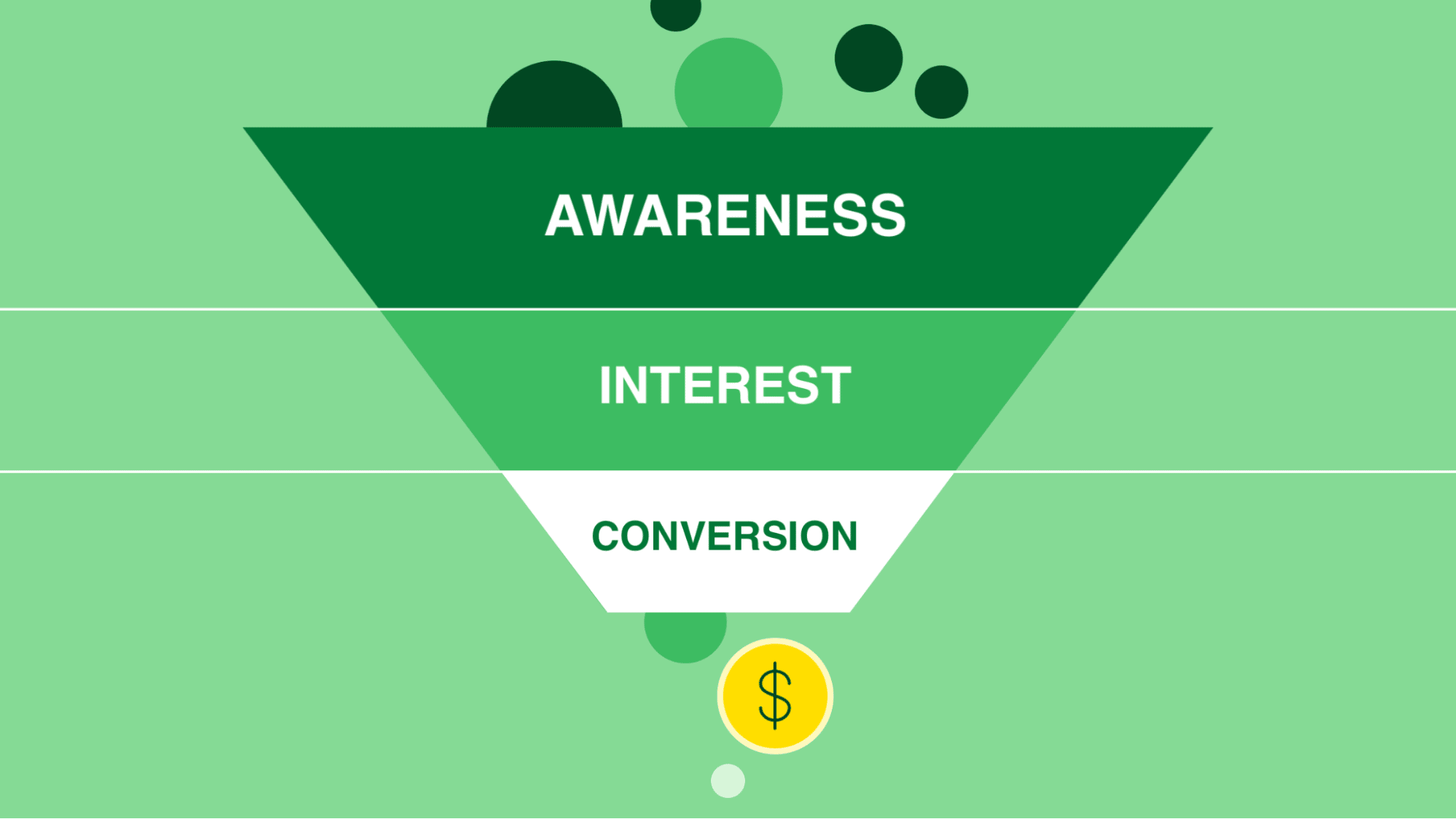
For example, start with a podcast sponsorship to build awareness, add LinkedIn posts to nurture interest and finish with discount codes to encourage conversions.
Note: A 2024 Famester study found that 44% of brands prefer to work with nano-influencers for their authenticity and deep audience connections – up from 39% in 2023.
3. Find and vet the right influencers
Look for people in your field who can spread your message.
Reach matters, but follower count alone won’t help you. What will boost visibility is an influencer whose audience overlaps with yours and whose style fits your brand.
Here’s what to check:
Audience demographics. Do the influencer’s followers overlap with your buyer personas? Think about age, interests, location and buying habits.
Engagement quality. Look for comments, shares and questions, not just likes. Meaningful interactions signal real trust.
Subject relevance. Does the influencer regularly post about your industry or specialism? Do others in your field respond positively?
Brand values. Do their tone and style align with your brand? Influencer content should feel like an extension of your marketing efforts, not something that jars your audience.
For example, Asana invited business consultant Terence Bryant to speak on leadership at its Asanathon 2024 event.

Bryant’s audience of executives overlapped with Asana’s targets. His focus on productivity kept the session relevant and his practical style aligned with the brand’s values. It was a perfect fit.
The opposite is also true: choose poorly and it can backfire.
For instance, ELF Cosmetics recently faced customer backlash for a mismatched influencer partnership. It chose a controversial comedian to promote its product in an ad.
The beauty brand was forced into making a public apology, proving that alignment matters as much as reach.
As for where to search for influencers, you’ve got a few reliable options:
Search industry hashtags on social platforms
Check your competitors’ brand collaborations for inspiration
Browse speaker lists for conferences and webinars
Listen to popular podcasts from your industry to find interesting guests
Watch who your peers engage with on social media
Once you’ve identified some good fits, engage with their content a few days before reaching out. A thoughtful comment or share is the first step toward a genuine, long-term partnership.
Ensure your website and profiles are ready to impress, too. Sprout Social found that 93% of influencers look at the quality of a brand’s existing content before agreeing to work together.
4. Structure partnerships for mutual benefit
Successful partnerships work for both sides, so pitch mutual benefits to attract content creators and social media influencers.
Remember, the aim is to craft content that feels authentic to their audience while serving your campaign goals. Influencers need to be as happy with the fit as you are.
Here are three ways to create a stand-out influencer marketing pitch:
Personalize outreach to make it feel purposeful and intentional. Show you’ve done your homework by citing specific social media posts or ideas you value.
Set realistic expectations by clearly detailing your goals, preferred formats and timelines. Leave some room for creativity to keep the content authentic.
Add value beyond money by offering access to your expertise, data or contacts. The best influencers are in it to further their careers, not just make a quick buck.
Pair specific content creation ideas with a broader vision for the future. Long-term plans show you’re committed to a fruitful relationship and aren’t just trying to use the influencer’s reach.
Famester reports that over 63% of brands used the same influencer for multiple campaigns in 2024, up from 57% in 2022.
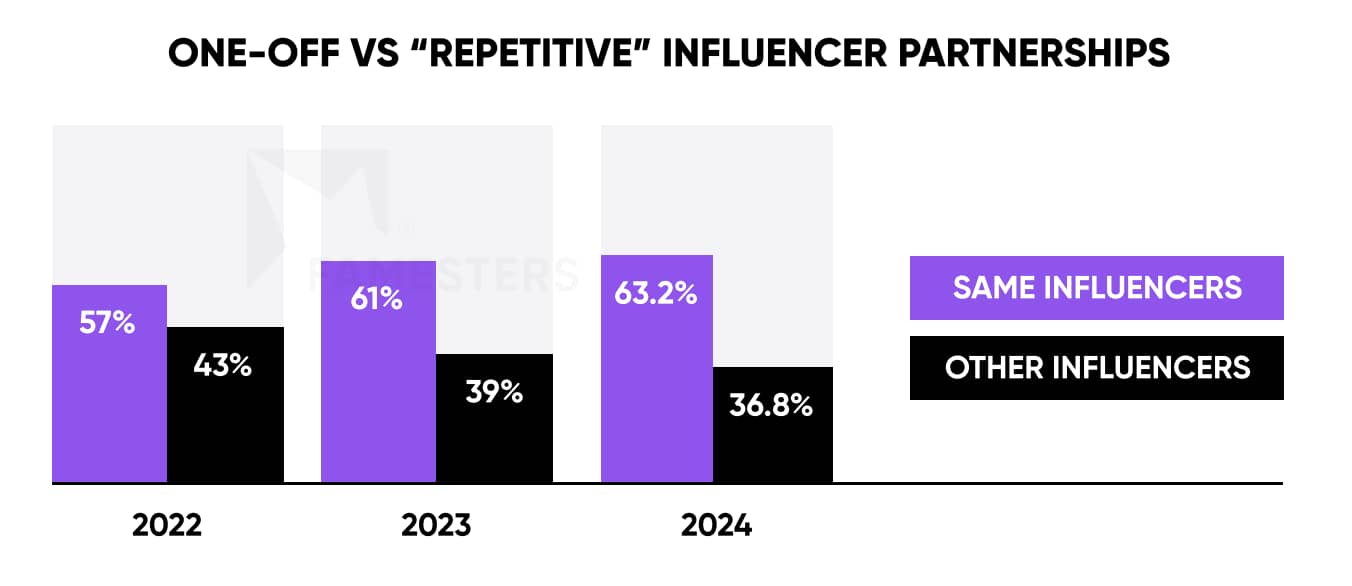
Its researchers cite the benefits as “more authentic engagement, better ROI and a deeper understanding between the brand and the influencer”.
You can manage influencer relationships in Pipedrive’s CRM alongside leads and customers. Store engagement data and tag partners by reach, industry or collaboration history to keep track of all your influencer marketing efforts.
You can access all the relevant information in the contact detail view:

You could also set up a custom CRM pipeline to monitor new collaborations. Instead of the usual sales stages, you might have steps like “Identified > Outreach > Negotiation > Campaign live > Review”.
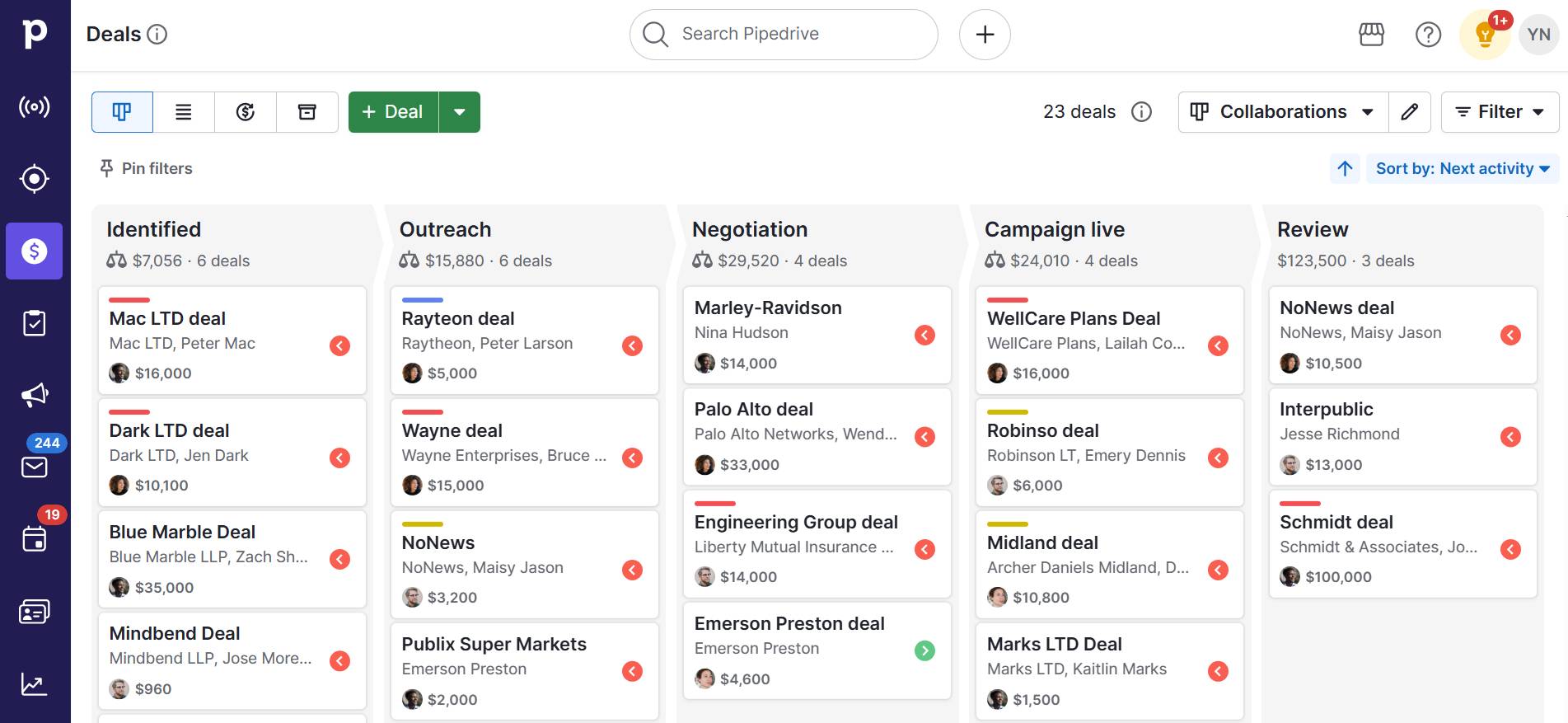
That way, anyone on the team can quickly see where each partnership stands and nurture the relationship if necessary.
5. Track campaign performance via business metrics
The value of influencer marketing comes from results you can measure. Don’t stop at likes or impressions – connect your campaigns to real sales outcomes.
Here’s what to measure and where to find it:
Key performance indicator | Metrics and where to find them |
Engagement rates | Metrics: Comments, shares, saves and click-through rates. Why: High engagement shows your borrowed audience is paying attention, not just passively scrolling. Data source: Social media marketing tools (e.g., LinkedIn, Instagram, YouTube). |
Conversions | Metrics: Discount code activity, tracked links and webinar sign-ups. Why: Conversions prove that influencer activity contributes to new relationships and sales. Data source: Customer relationship management (CRM) and marketing automation platforms. |
Lead quality | Metrics: Marketing-qualified leads (MQLs) and sales-accepted leads (SALs). Why: Generating good-fit leads who will move through your sales pipeline towards purchasing makes the effort worthwhile. Data source: CRM pipeline reports and lead-scoring tools. |
Pipeline impact | Metrics: Deals created, progressed or closed after influencer campaigns. Why: Pipeline activity ties influencer marketing directly to new sales revenue, which is the purpose of doing it in the first place. Data source: CRM deal reports and sales dashboards. |
These KPIs help track progress, but return on investment is the ultimate measure.
ROI shows whether influencer marketing pays off compared to other channels, like traditional advertising or search engine optimization (SEO).
The basic formula for working out influencer marketing ROI is as follows:
ROI (%) = (revenue from influencer campaigns – campaign cost) ÷ campaign cost x 100
For example, if your campaign generated $15,000 in extra sales and cost $5,000, the ROI would be 200%. Here’s the calculation in our template:
($15,000 – $5,000) ÷ $5,000 x 100 = 200% ROI
With the right tracking, you can prove value to stakeholders while identifying which influencer partnerships and activities deserve more budget.
3 influencer marketing trends to watch in 2025 and beyond
The influencer marketing industry is still evolving fast.
The more you know about what’s happening, the easier it is to outperform slower competitors. With that in mind, here are three key shifts shaping the space.
Trend 1: AI-driven influencer discovery and lead management
AI influencer marketing tools can surface the most relevant influencers, forecast campaign performance and suggest the best content formats.
In an Influencer Marketing Hub survey, 66.5% of marketers said AI had improved their campaign outcomes and 73% believe AI can automate much of the influencer marketing process.
Platforms like Favikon (pictured below), Brandwatch and Find Your Influence save your team from manual research, while helping you target the creators most likely to deliver ROI.
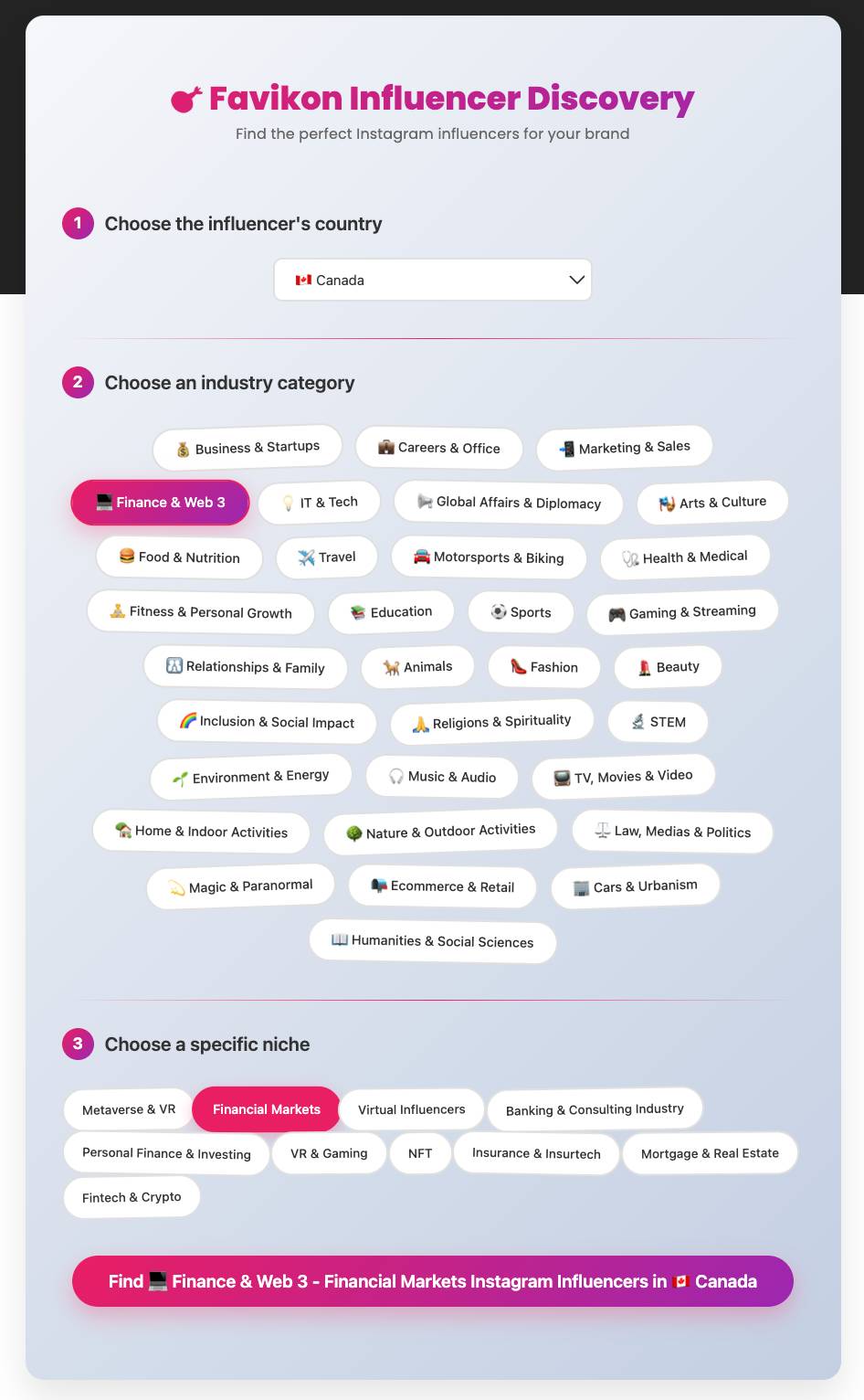
The best influencer marketing platforms offer free versions or trials, so you can see how they work before investing.
Once you find the right people, Pipedrive’s AI helps with the sales outreach and lead nurturing parts of effective influencer marketing.
See which leads come from influencer-driven traffic, automate follow-ups and use AI prompts to keep up with new deals in your pipeline.
Here’s an automation to showcase which leads come from influencer-driven traffic:
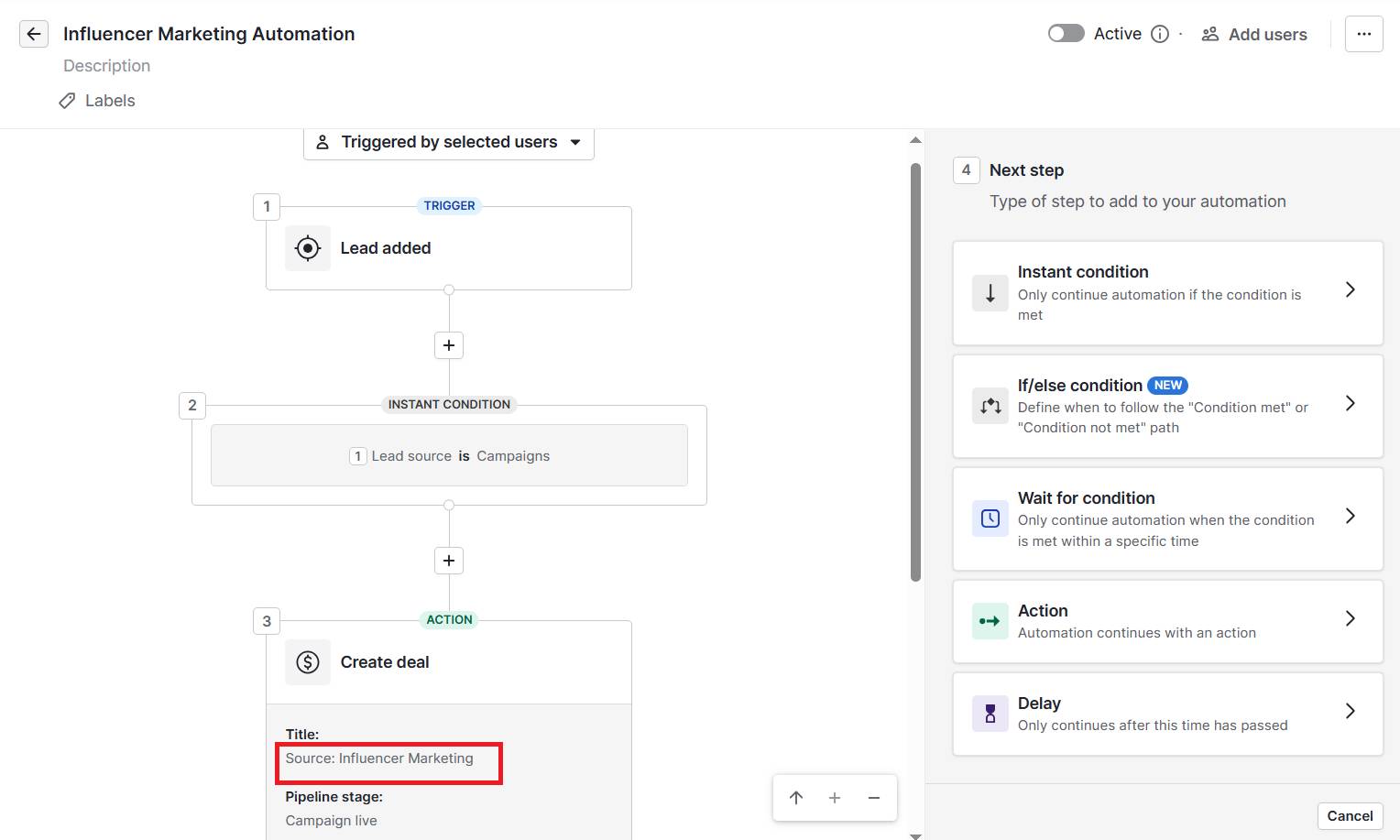
Using an AI CRM turns influencer marketing into a structured, measurable sales channel rather than a one-off experiment.
For example, you could use Pipedrive’s Pulse to enrich influencer profiles with public information and the AI email writer to draft personalized follow-ups faster.
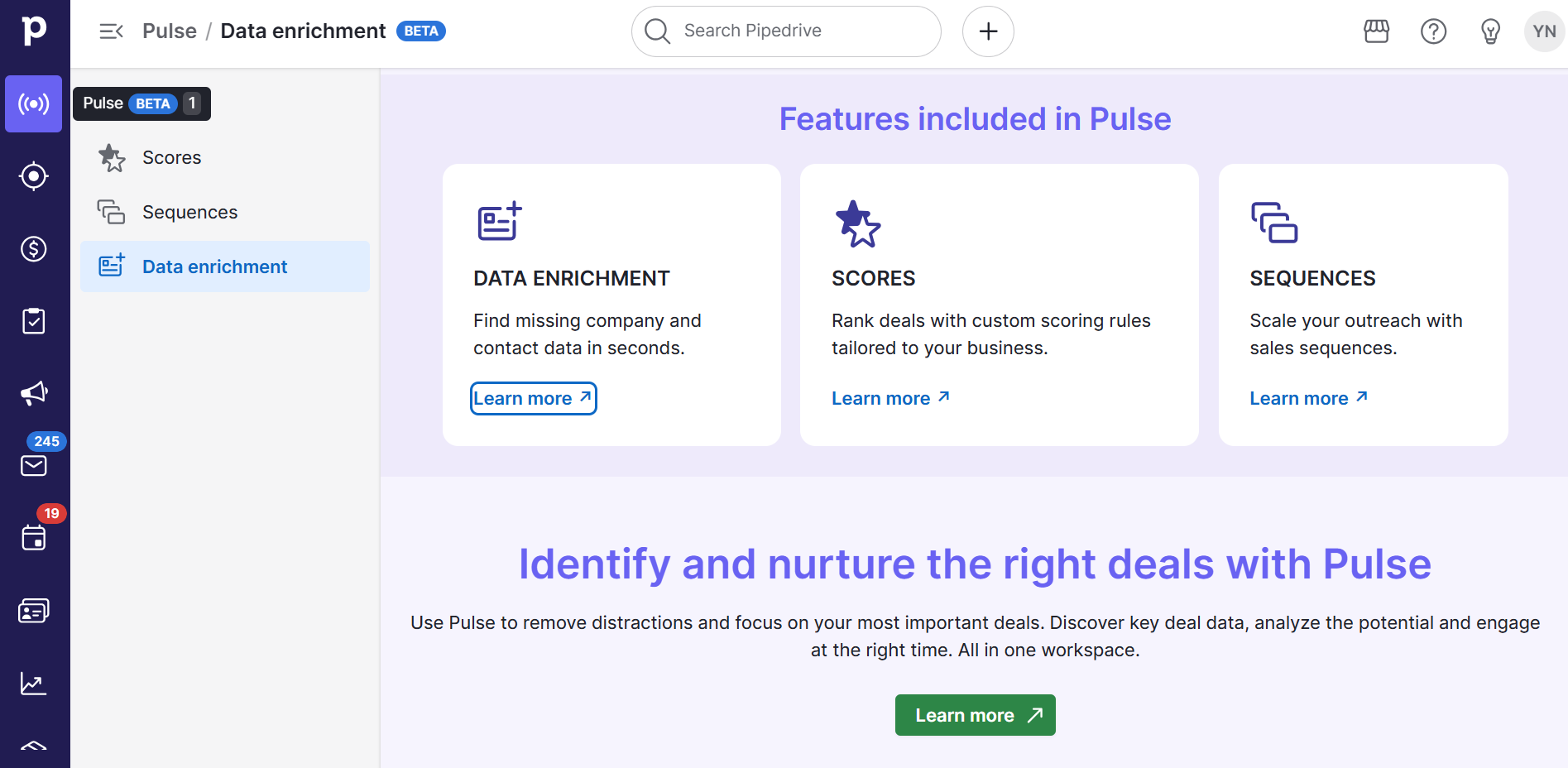
Together, these features let you nurture influencers and the leads they help generate at scale – without losing the human touch that makes people want to work with you.
Easy win: Start a free Pipedrive trial to see how AI can help you nurture influencer-sourced leads and measure sales performance to learn what works.
Crush your manual admin with this sales automation guide
Trend 2: The growth of micro- and nano-influencers
Micro- and nano-influencers are gaining popularity because of their high engagement rates and closer ties to their communities.
Macro-influencers still play a big role in the industry, though primarily for larger brands with huge marketing budgets.
Here’s the latest data on the influencer types brands favor, as reported by Famester:
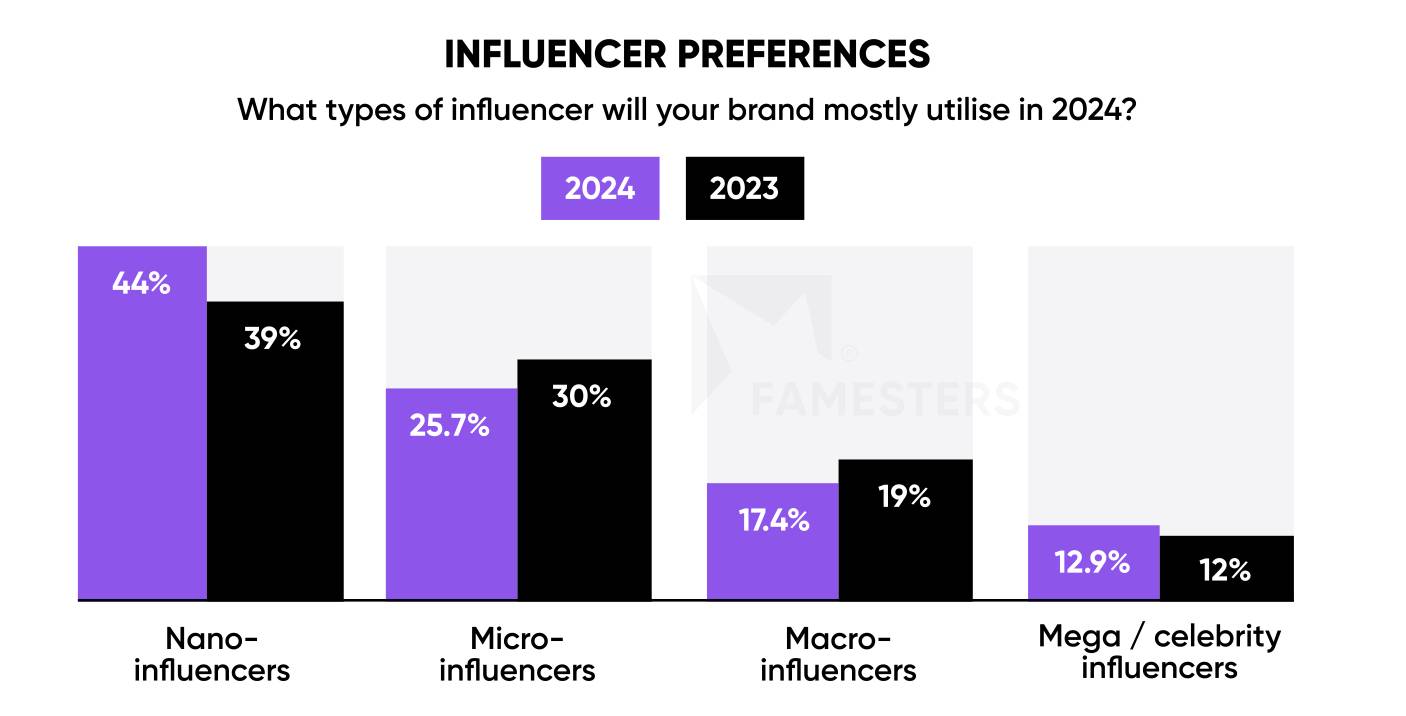
These smaller-scale influencers often bring more credibility than celebrity endorsements, making them ideal for B2B brands looking to build authority in their specialism.
Easy win: Skip paying top-tier Instagram influencers for mass reach and instead partner with a handful of niche LinkedIn creators or podcast hosts who speak directly to decision-makers.
Trend 3: Influence beyond mainstream social platforms
While Instagram and TikTok remain essential in some spaces, LinkedIn thought leaders, podcasts, Slack communities and industry webinars influence professional buyers.
B2B companies are increasingly seeking influencers with authority in these channels. For example, here’s a prominent social media manager promoting Planable’s content management tool to over 10,000 followers on LinkedIn:
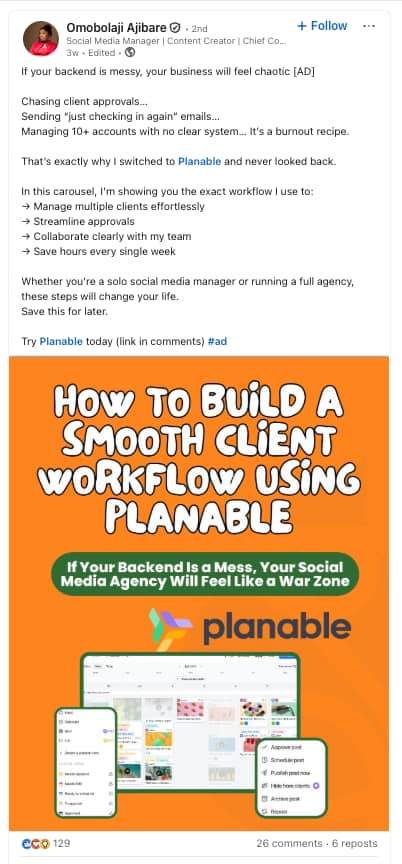
The inclusion of “[AD]” and “#ad” in this post means Planable compensated the user to promote its product to their followers.
These followers are professional people who trust the user’s recommendations and could be persuaded to sign up or explore the product further, much like the consumers who take recommendations from Instagram.
Easy win: Find an influencer marketing agency that specializes in B2B partnerships and can match your brand with experts who drive conversation in niche spaces. Influencer Marketing Hub’s agency directory is a great starting point.
Final thoughts
The strongest B2B influencer marketing campaigns involve choosing the right partners, aligning on goals and nurturing long-term relationships that feel authentic to both sides.
Treat these thoughtfully planned influencer collaborations as part of your wider digital marketing strategy. You’ll soon turn trusted voices into a consistent source of awareness, engagement and conversions – all tangible benefits you can measure in your CRM.
See how Pipedrive makes influencer marketing, lead management and performance tracking easier: sign up for a free 14-day trial today.
